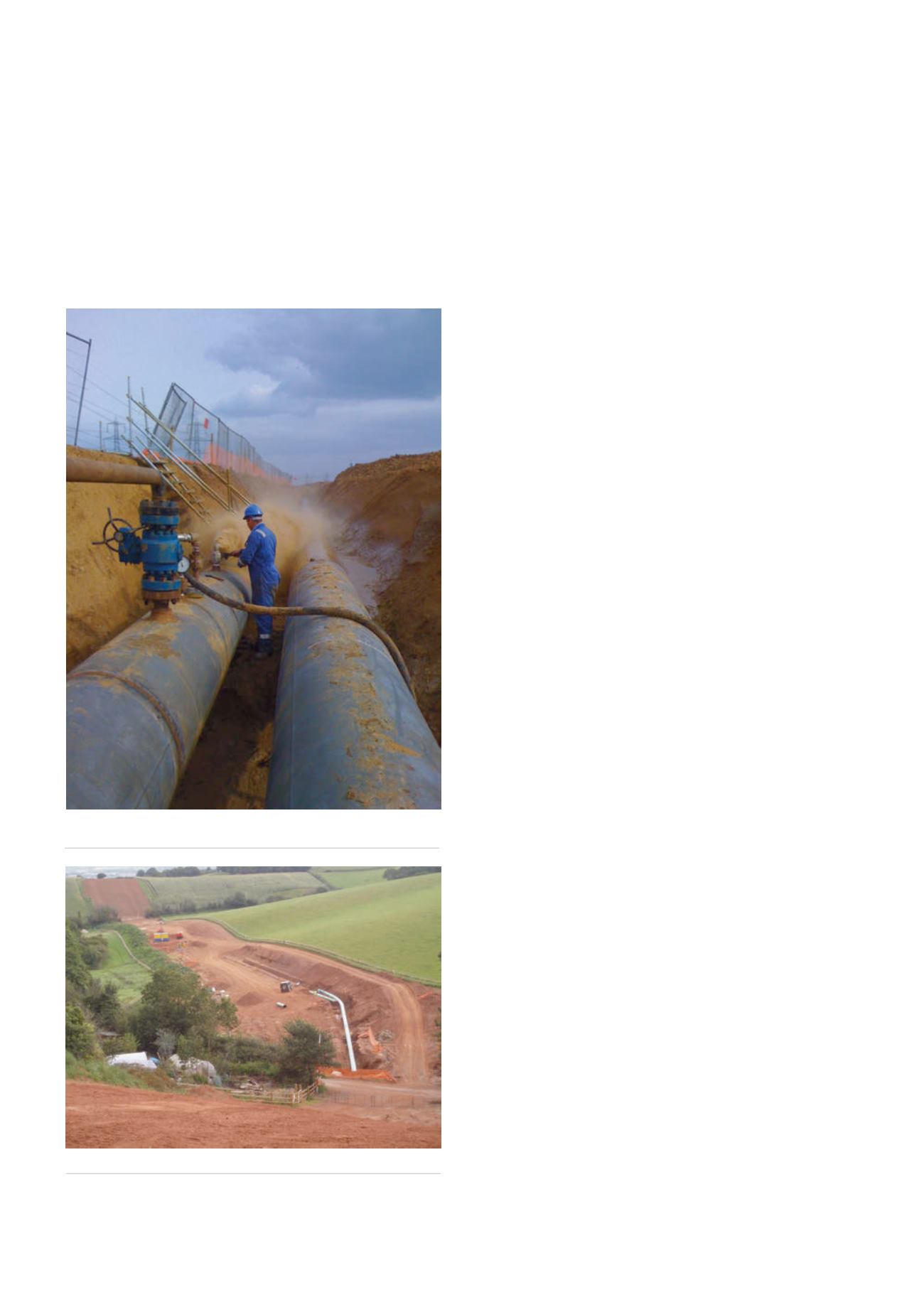
to maintain the plate centrally in the pipeline due to the
weight of the pig.
The gauge plate diameter is sized to 95% of the minimum
internal bore of the pipeline or fittings, subject to a minimum
clearance of 25 mm on diameter (dependant on specification
used).
Should a pipeline section contain a dent or buckle the
passage of the pig may not necessarily be impeded but
damage to the plate will be apparent on retrieval (Figure 3).
In order to discover the location of any dent the gauge
pig is re-run, this time fitted with a steel plate and transmitter.
The pig is tracked until the defect is reached and the pig
stopped by the steel plate. The pipe is then excavated, pig
and dent removed and a new section of pipe inserted. The
cause of the dent must also be determined and removed. The
gauge run is then repeated end-to-end until a satisfactory
‘clean’ plate is received.
Filling
The pipeline section must be completely filled with water
prior to hydrotest. Care must be taken in assessing the profile
of the section and sufficient back-pressure inserted in front of
the pigs prior to launch to prevent the pigs ‘running away’ on
downhill sections due to the weight of water behind.
Lack of back-pressure has led to sections becoming air-
locked, necessitating the use of high pressure compressors to
overcome the combined effects of multiple static heads in
order to retrieve the pig and empty the pipeline.
Fill pumps should have sufficient capacity for the flowrate
required and adequate head to efficiently fill an individual
test section and overcome static head produced by multiple
sections requiring transfer filling from a single source.
Two pigs, separated by a slug of water, are normally
sufficient to fill a section for hydrotest. In the event that water
supply is restricted (it has been known to take nine days to fill
10 km 900 NB pipeline) additional pigs and extra back-pressure
should be considered to satisfactorily fill the section.
Water is pumped from its source to a break tank to
allow any air entrained in the water to dissipate before being
pumped into the pipeline. The water should be filtered and
metered. Samples for testing should be taken as evidence to
the quality of the water.
When transfer filling across multiple sections steel pipe
must be used between sections. Short flexible hose should
only be used as kicker lines to launch pigs from test ends.
Flowrates must be monitored and recorded as evidence
that the abstraction licence conditions have not been
breached. Pressures at both ends of the pipeline must be
monitored and logged.
Filling rates will vary, dependent on the size of the source.
In the UK abstraction is usually limited to a maximum of
50 l/sec. (180 m
3
/hr). The nominal fill rate for a test section is
1 km/hr in order to achieve a satisfactory fill.
Upon receipt of the filling pigs the water slug between
them is discharged, usually to the excavation or to settlement
lagoons.
Hydrostatic testing
Training and a demonstration of competencies is of major
importance to clients. As well as undergoing in-house and
on-the-job training, employees are required to complete
several different levels of externally recognised training
courses before being permitted to work onsite. The
competence of an individual must be recorded, a CV
maintained and approval sought at high level within the gas
industry to gain access to and work on certain sites.
Figure 4.
Discharge of water slug – note the steel transfer pipe
and kicker hose between test sections.
Figure 5.
Hydrotest and tie-in point between test sections.
172
World Pipelines
/
AUGUST 2015


